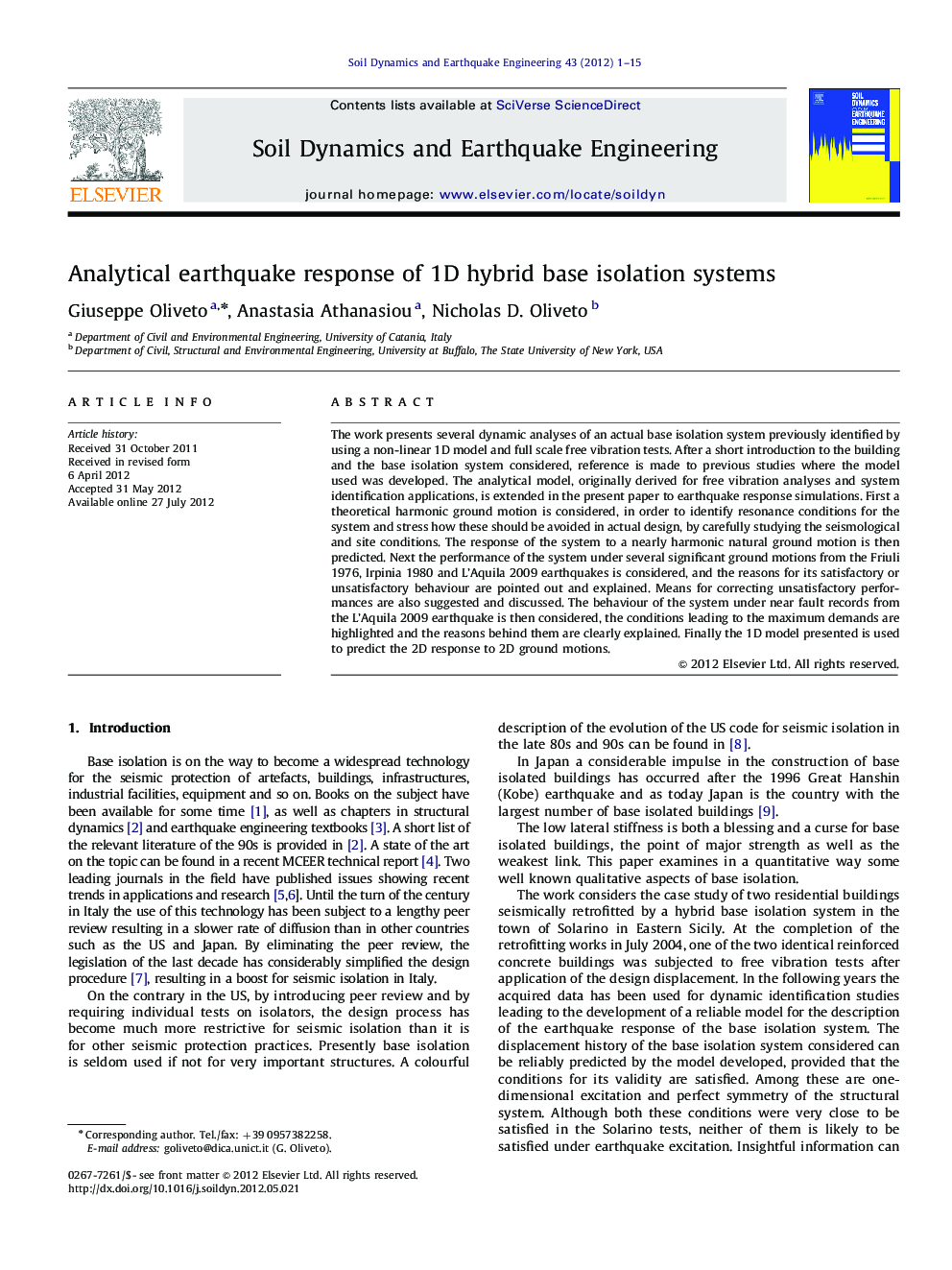| Article ID | Journal | Published Year | Pages | File Type |
|---|---|---|---|---|
| 304410 | Soil Dynamics and Earthquake Engineering | 2012 | 15 Pages |
The work presents several dynamic analyses of an actual base isolation system previously identified by using a non-linear 1D model and full scale free vibration tests. After a short introduction to the building and the base isolation system considered, reference is made to previous studies where the model used was developed. The analytical model, originally derived for free vibration analyses and system identification applications, is extended in the present paper to earthquake response simulations. First a theoretical harmonic ground motion is considered, in order to identify resonance conditions for the system and stress how these should be avoided in actual design, by carefully studying the seismological and site conditions. The response of the system to a nearly harmonic natural ground motion is then predicted. Next the performance of the system under several significant ground motions from the Friuli 1976, Irpinia 1980 and L'Aquila 2009 earthquakes is considered, and the reasons for its satisfactory or unsatisfactory behaviour are pointed out and explained. Means for correcting unsatisfactory performances are also suggested and discussed. The behaviour of the system under near fault records from the L'Aquila 2009 earthquake is then considered, the conditions leading to the maximum demands are highlighted and the reasons behind them are clearly explained. Finally the 1D model presented is used to predict the 2D response to 2D ground motions.
► Dynamic and earthquake response of hybrid base isolation systems. ► Analytical solution. ► Resonant response. ► Response to strong natural ground motions. ► Soft soil and near fault conditions.
